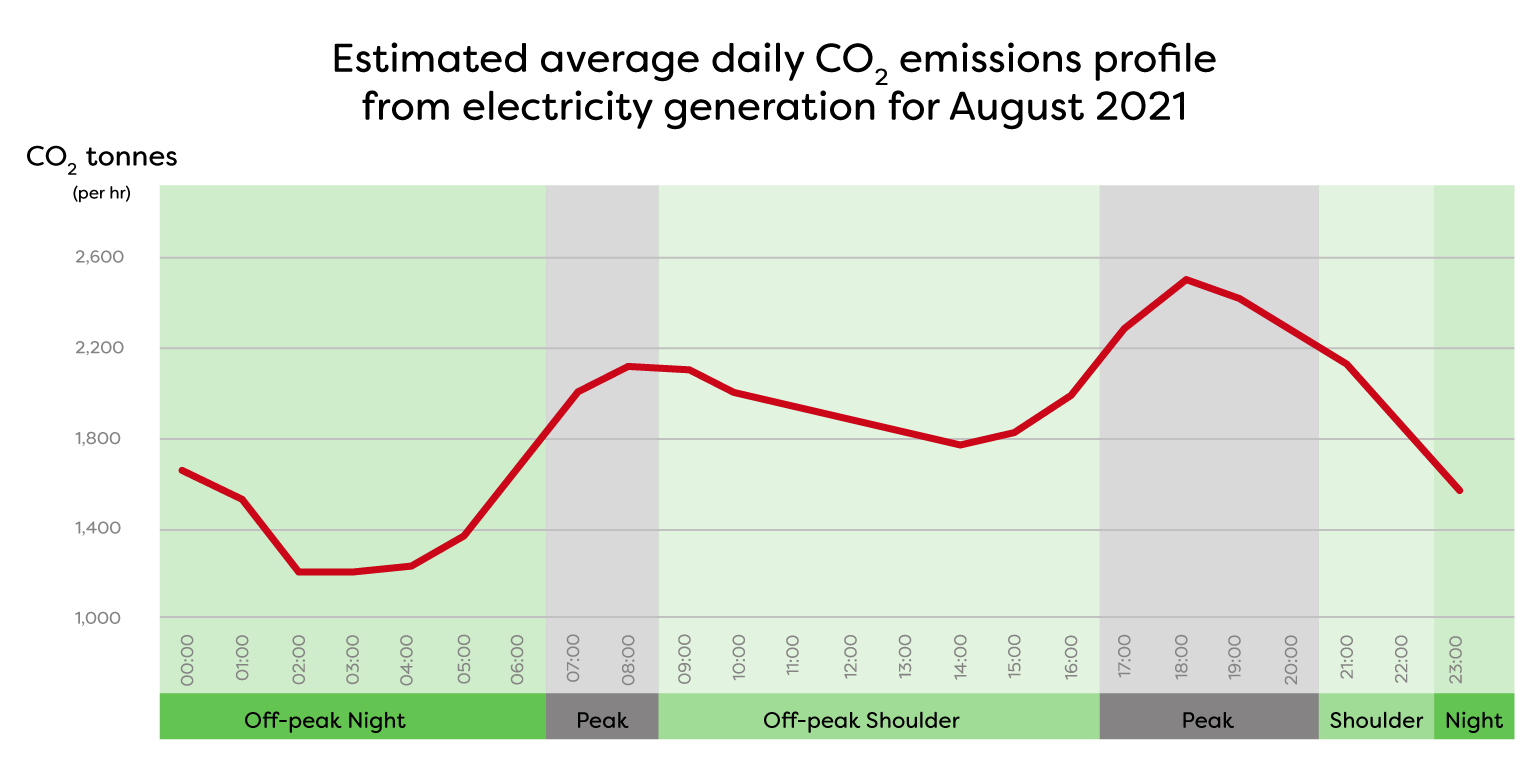We’re super proud of our MoveMaster plan because it combines the two things we care about most…. helping you save money on bills, and supporting the green transition with meaningful action rather than just words.
MoveMaster comes with cheaper off-peak rates than our other plans, as well as half price rates at night (11PM - 7AM). It’s all about incentivising customers to ‘move’ as much of their energy usage as practically possible away from peak periods and rewarding them for doing so.
Why exactly do we want to encourage everyone to use things like their dishwasher, washing machine, clothes dryer and cooling and heating appliances later in the day (or early morning if you prefer)? Well, because using power overnight means it’s more likely to be coming from renewable generation sources rather than coal or gas. Fossil fuel generation is typically most needed during high-demand periods, so reducing the demand reduces the need for coal and gas and therefore helps to reduce our carbon emissions.
It may take some time for New Zealand to totally end its reliance on carbon-emitting sources of energy, but the more households that can move some power usage off peak the better.
Why is less carbon used at night?
New Zealand’s hydroelectricity generators provide the ‘base load’ power we need most of the time. We’re ahead of many countries in this respect because it means renewables are our primary source of electricity, which is great. But when energy demand spikes during the morning rush and early hours of the evening, we usually require additional supply from coal and gas generators to meet this demand. Given the low demand overnight, we can be more confident the energy being used has come from hydro power or other green sources.
The following graph shows how the amount of carbon electricity generation in the grid peaks during the early evening but reduces dramatically overnight.

We have estimated the level of carbon emissions for a given period by multiplying the electricity generated by plant in that period by an assumed emissions intensity factor (CO₂/kwh). Emissions intensity factor varies by generation plant type, and we have used a range of sources to form our assumptions, sources provided at the foot of this page. The example shows average outcomes for each hour across the entire month of August 2021. A specific day may see higher or lower emissions intensity at different times, but the overall trend remains consistent.
This is an example of how the emissions profile of New Zealand could look and is not an exact science. The truth is that, while it is generally accepted that less carbon is used for overnight electricity generation, official sources to confirm this are hard to quantify.
Isn’t carbon offsetting just as good?
Our view is that carbon offsetting your energy usage is better than nothing. But if you’re like us and really passionate about the green transition, then meaningful change is the best way to get there. Sure, knowing that someone is going to plant some trees for you somewhere in the world is nice, but it’s not reducing our reliance on coal and gas today. Changing the way you use energy does have an impact today. And that’s what our MoveMaster plan is about.
Sources to support estimated carbon emissions example:
NZ Geothermal Association
Greenhouse Gas Emissions From New Zealand Geothermal: Power Generation and Industrial Direct Use
Greenhouse Gas Emissions From New Zealand Geothermal Power Generation in Context
Huntly/Coal
Environmental Costs of Electricity Generation (Waikato Regional Council)
Security of Supply in the New Zealand Electricity Market (The University of Auckland)
Emission Factors - CO2 Combustion (MBIE)
Stationary Combustion (2006 IPCC Guidelines for National Greenhouse Gas Inventories)
MoveMaster
Cheaper off-peak power and half price overnight (11pm-7am). Plus an epic solar buyback.
Moving power off-peak can reduce your impact on the environment, so it helps your wallet and the planet.